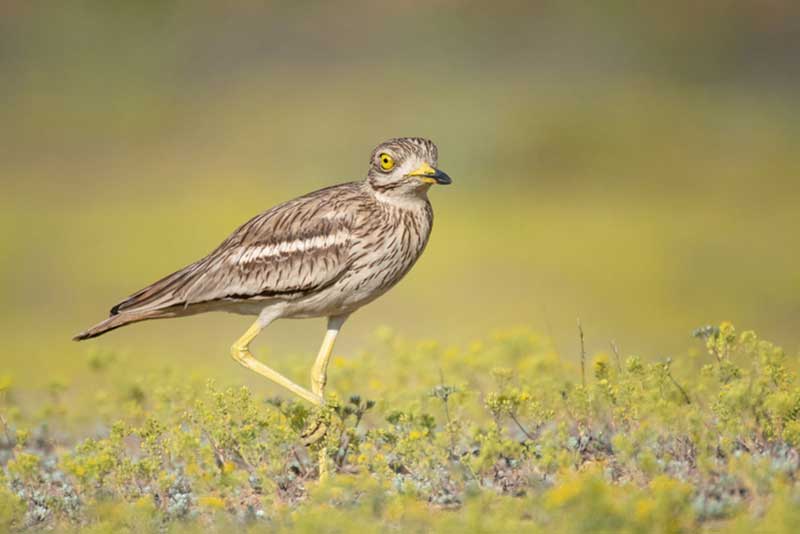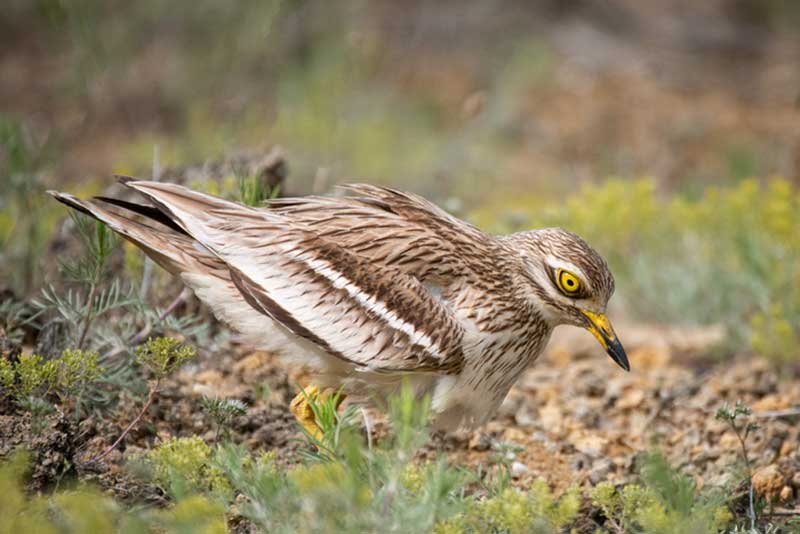Main Menu

Breeding birds: 400 pairs
Family: Stone-Curlews
Stone curlews are pale brown with dark brown and buff streaked upperparts, and white or buff underparts with brown streaks on their breasts. The uppertail is brown and the undertail is buff. They have brown and black wings with white wing bars.
The crown and nape are streaked with buff and brown and the forehead and throat is white or buff. They have distinctive large, yellow eyes which are adapted to foraging at night, the dagger-shaped bill is yellow with a black tip, and the legs and feet are yellow-green.
Male and female stone curlews look the same.
Juveniles are similar to adults, but paler and browner in appearance and the wing bars are less conspicuous.
Try our interactive bird identifier
Stone curlews breed between April and August. The nest is a scape on the ground on bare stony soil with sparse vegetation, lined with small stones, shells, plant matter, or rabbit droppings.
Stone curlews lay 2-3 cream or buff eggs with dark brown marks which are incubated by both the female and the male for 26 days. Chicks leave the nest within 2 days and are fed by both parents until they fledge 36-42 days later.
Stone curlews forage between dusk and dawn and feed on insects, beetles, and worms. They will occasionally supplement their diet with small reptiles, frogs, and rodents.

Stone curlews can be seen in the UK between March and October. Look out for them on bare, stony ground or short vegetation in Wiltshire and Norfolk.
Stone curlews are not related to curlews but get their name from their nocturnal call which sounds like the call of the Eurasian curlew. They are also known as thick-knees due to their prominent tibiotarsal joints.
One Response
Just seen a stone curlew on arable feild in kelsall cheshire been on ground all day